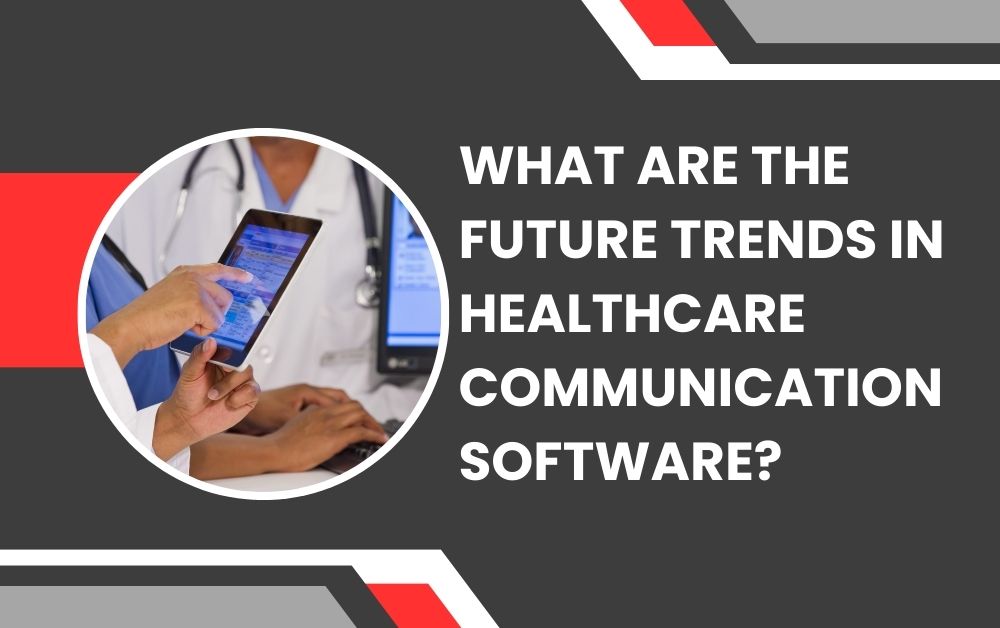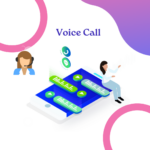Healthcare communication software is essential for the efficient functioning of modern healthcare systems. It helps streamline communication among healthcare providers, enhance patient care, and improve overall hospital administration. With rapid technological advancements, the future of healthcare communication software looks promising and exciting. This blog will explore the future trends in healthcare communication software, focusing on the innovations and developments that will shape the industry.
Increasing Use of Artificial Intelligence (AI)
Artificial Intelligence (AI) is revolutionizing various industries, and healthcare is no exception. AI in healthcare communication software is expected to become more prevalent in the future. AI can help in automating routine tasks, analyzing vast amounts of data, and providing actionable insights. For instance, AI-powered chatbots can handle patient inquiries, schedule appointments, and provide preliminary medical advice, freeing up healthcare professionals to focus on more complex tasks.
Moreover, AI can assist in predictive analytics, helping healthcare providers anticipate patient needs and potential health issues before they become critical. This proactive approach can lead to better patient outcomes and more efficient use of resources. AI can also enhance data security by detecting unusual patterns and potential threats, ensuring patient information remains confidential and protected.
Addition – Ready to transform your healthcare practice with cutting-edge communication solutions? BlueSecure.ai offers the most advanced Healthcare communication software to streamline your operations and improve patient care. Contact us today to learn more about how our innovative software can benefit your practice. Let BlueSecure.ai be your partner in providing excellent healthcare communication!
Integration with Telehealth Services
Telehealth has gained significant traction, especially in the wake of the COVID-19 pandemic. The integration of healthcare communication software with telehealth services is a trend that will likely continue to grow. This integration allows patients to consult with healthcare providers remotely, reducing the need for in-person visits and making healthcare more accessible, especially for those in remote areas.
Healthcare communication software can facilitate seamless telehealth interactions by providing a platform for video consultations, secure messaging, and digital health records. This ensures that patients receive continuous and comprehensive care without the barriers of distance and travel. Telehealth integration also allows for better management of chronic diseases, as patients can regularly check in with their providers without leaving their homes.
Enhanced Mobile Accessibility
The use of mobile devices in healthcare is on the rise, and this trend is expected to continue. Future healthcare communication software will likely be designed with a mobile-first approach, ensuring that both healthcare providers and patients can access the software easily from their smartphones and tablets. This enhanced mobile accessibility can lead to more timely communication, quicker response times, and improved patient engagement.
Mobile-friendly healthcare communication software can include features such as push notifications for appointment reminders, medication alerts, and real-time updates on patient status. This can help reduce missed appointments and ensure patients adhere to their treatment plans. Additionally, mobile accessibility can facilitate better collaboration among healthcare teams, as they can communicate and share information on the go.
Emphasis on Interoperability
Interoperability is the ability of different healthcare systems and software to communicate and exchange information seamlessly. In the future, there will be a greater emphasis on interoperability in healthcare communication software. This will allow for the integration of various health information systems, electronic health records (EHRs), and other digital tools, creating a cohesive and efficient healthcare ecosystem.
Interoperability ensures that patient information is readily available to all relevant healthcare providers, regardless of the system they use. This can lead to more informed decision-making, better coordination of care, and reduced duplication of tests and procedures. Moreover, interoperable systems can facilitate population health management by providing a comprehensive view of patient data, helping identify trends and inform public health initiatives.
Advanced Data Analytics
Data analytics is becoming increasingly important in healthcare, and future healthcare communication software will likely incorporate more advanced analytics capabilities. These tools can help healthcare providers make sense of large volumes of data, identify patterns, and make data-driven decisions. Advanced data analytics can improve patient outcomes by providing insights into patient behavior, treatment efficacy, and potential health risks.

For instance, predictive analytics can help identify patients at high risk of readmission, allowing providers to implement preventive measures and reduce hospital readmission rates. Data analytics can also support personalized medicine by analyzing genetic, environmental, and lifestyle factors to tailor treatments to individual patients. Furthermore, analytics can enhance operational efficiency by identifying areas for improvement, such as resource allocation and workflow optimization.
Focus on Patient Engagement
Patient engagement is a critical aspect of healthcare, and future healthcare communication software will likely place a greater emphasis on engaging patients in their care. This can be achieved through features such as patient portals, personalized health information, and interactive tools. Engaging patients in their care can lead to better health outcomes, increased patient satisfaction, and improved adherence to treatment plans.
Patient portals can provide patients with access to their health records, lab results, and appointment schedules, empowering them to take an active role in their healthcare. Personalized health information, such as tailored wellness tips and reminders, can motivate patients to make healthier lifestyle choices. Interactive tools, such as health trackers and symptom checkers, can help patients monitor their health and identify potential issues early.
Emphasis on Security and Privacy
With the increasing digitization of healthcare, ensuring the security and privacy of patient information is more critical than ever. Future healthcare communication software will likely incorporate more robust security measures to protect sensitive data from breaches and cyberattacks. This can include features such as encryption, multi-factor authentication, and regular security audits.
Healthcare providers must comply with regulations such as the Health Insurance Portability and Accountability Act (HIPAA) in the United States, which sets standards for protecting patient information. Advanced security measures can help providers meet these requirements and build patient trust. Additionally, secure communication channels can prevent unauthorized access to patient data, ensuring confidentiality and integrity.
Personalization and Customization
Personalization and customization will be key trends in future healthcare communication software. This means tailoring the software to meet the specific needs of different healthcare providers and patients. Personalized communication can improve patient engagement by providing relevant and timely information. Customizable software can adapt to the unique workflows and requirements of different healthcare settings, enhancing efficiency and usability.
For example, healthcare communication software can offer personalized health tips and reminders based on a patient’s medical history and preferences. Customizable dashboards can provide healthcare providers with the information they need at a glance, improving decision-making and productivity. Moreover, personalized communication can foster stronger patient-provider relationships, leading to better patient satisfaction and loyalty.
Use of Blockchain Technology
Blockchain technology is gaining attention for its potential to enhance security, transparency, and trust in healthcare communication software. Blockchain can create a decentralized and immutable ledger of patient data, ensuring that information is accurate and tamper-proof. This can prevent data breaches and fraud, protecting patient privacy and confidentiality.
Blockchain can also facilitate secure data sharing among healthcare providers, improving interoperability and care coordination. Patients can control who has access to their data, ensuring that it is only shared with authorized individuals. Additionally, blockchain can support the verification of medical credentials and licenses, reducing the risk of fraud and ensuring that patients receive care from qualified professionals.
Conclusion
The future of healthcare communication software is bright, with numerous trends poised to transform the industry. From the increasing use of AI and telehealth integration to enhanced mobile accessibility and a focus on interoperability, these trends promise to improve patient care, streamline operations, and enhance data security. As healthcare continues to evolve, staying abreast of these trends will be crucial for providers looking to leverage technology to deliver better outcomes and experiences for their patients. Embracing these innovations can help healthcare organizations stay competitive and meet the growing demands of a digital world.
For more insightful articles related to this topic, feel free to visit thataiblog.com




